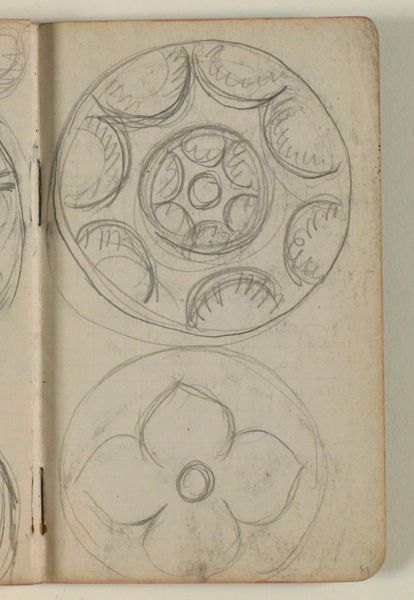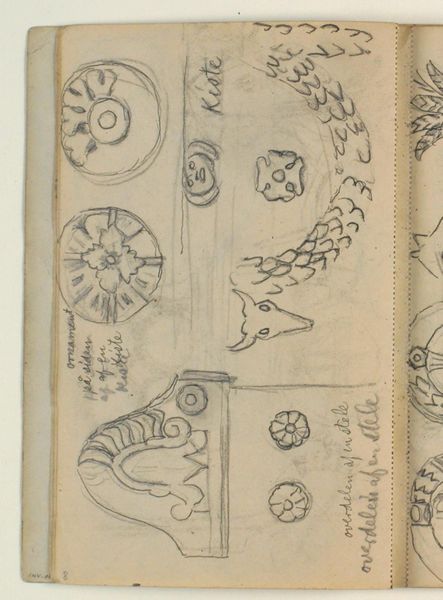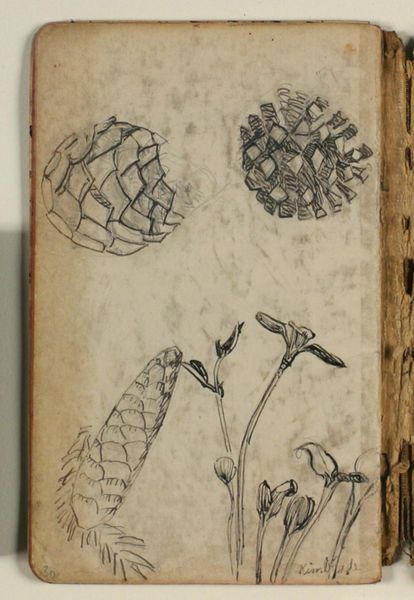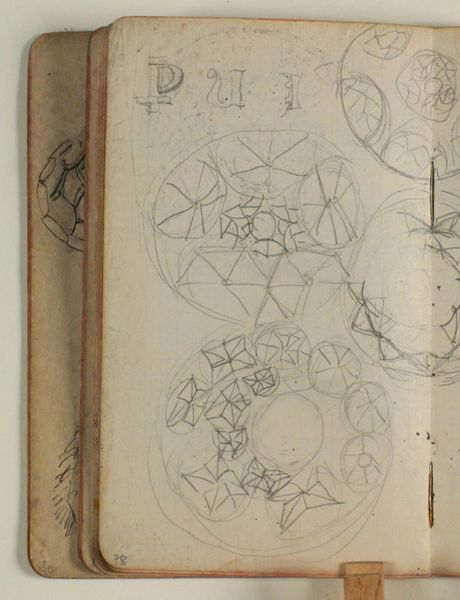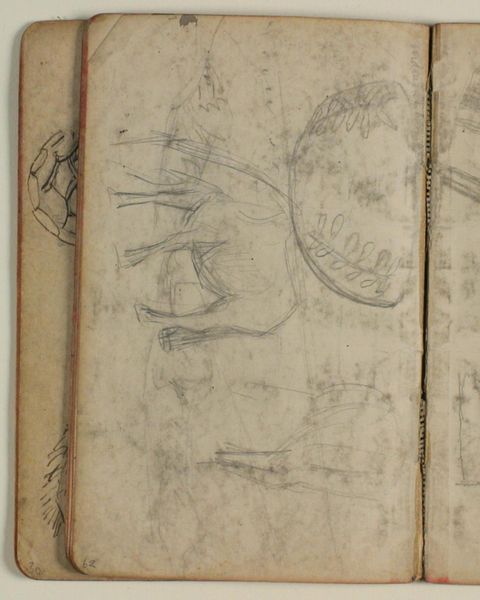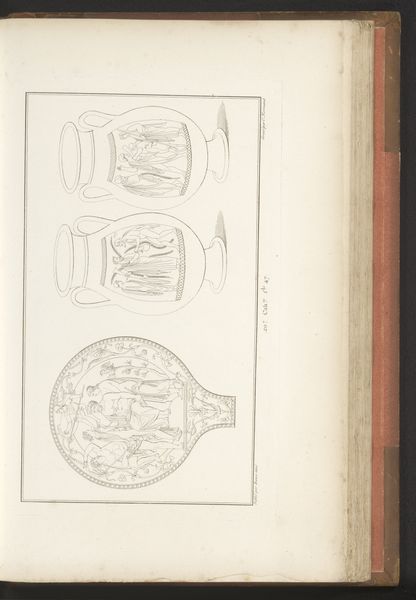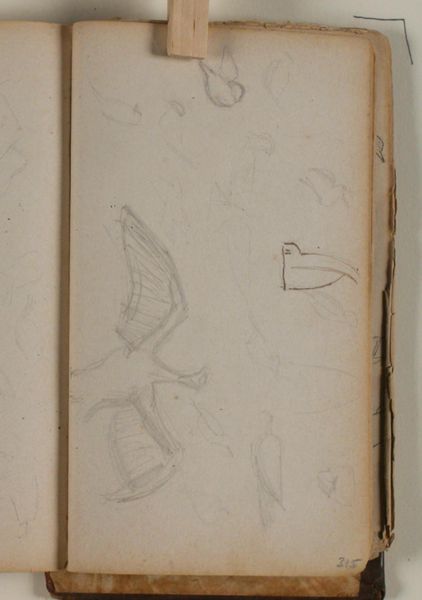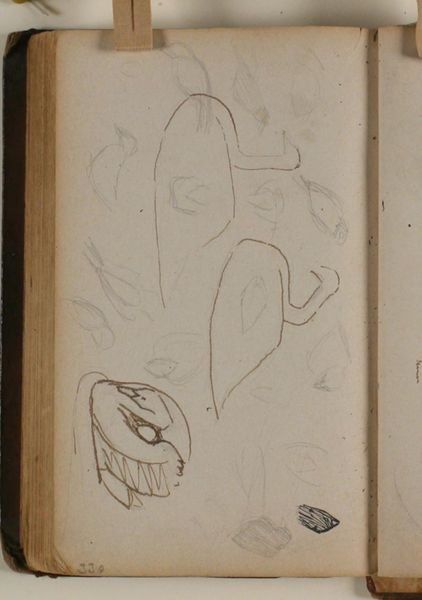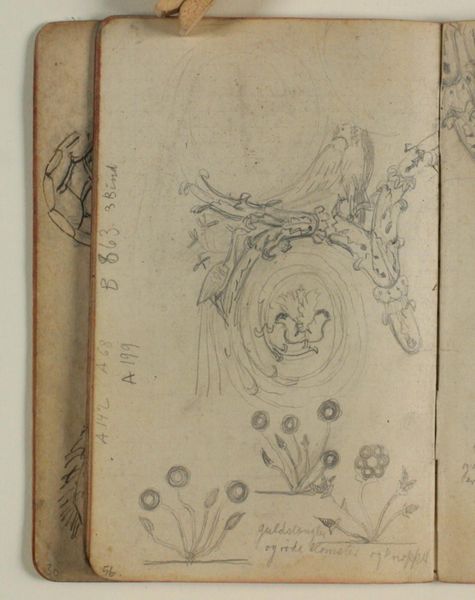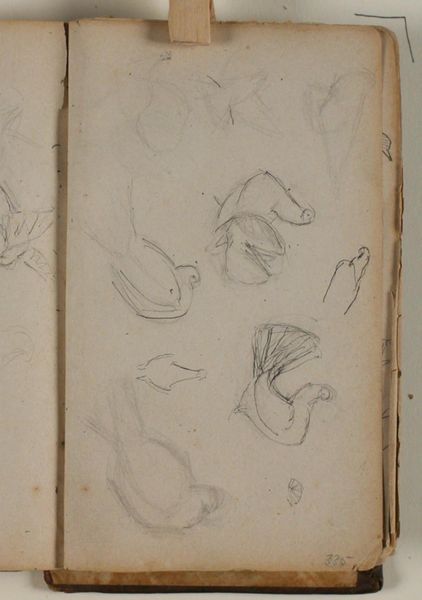
drawing, paper, pencil
#
drawing
#
art-nouveau
#
sketch book
#
paper
#
coloured pencil
#
geometric
#
pencil
Dimensions: 161 mm (height) x 96 mm (width) (bladmaal)
Curator: Let's explore Niels Larsen Stevns' "Studier af cirkulære ornamenter," dating from around 1906 to 1910. What strikes you first about this sketchbook page? Editor: There's something about the circular motifs repeated, it gives off an immediate sense of...almost a cosmic unfolding, contained on such a small scale, in muted colours. It's intimate and expansive at the same time. Curator: Absolutely. Knowing this is a page from a sketchbook helps frame it. It highlights Stevns’ working process, his exploration of form. Notice the varied pressure of the pencil and the occasional coloured pencil marks, hinting at a meticulous yet evolving approach. The raw materials—paper, pencil—are fundamental to this kind of art-making. Editor: I agree. And viewed through the lens of Art Nouveau, these geometric explorations move past just pure form. I think it hints to me at something larger: an escape into beauty at a time of huge societal transformation in Europe. Were these forms meant as decoration? Or as something deeper? It makes me consider who this work would be for and why. Curator: Exactly. While Art Nouveau often sought to elevate craft to the level of fine art, using mass production and natural forms for all spheres of living, it wasn't universally accessible. We have to remember how even supposed movements of democratization still participated in power structures that existed at that time. Editor: The sketchiness also reminds us of the un-monumentality of process. Perhaps Stevns questioned these structures himself and how those tensions would've felt when thinking about decoration. I wonder, did Stevns reflect the class dynamics inherent to making luxury goods with these forms? Or did it perhaps even offer a different interpretation of historical motifs, even spiritual symbols and ideas for social transformation? Curator: That’s insightful. Considering that Stevns may have been investigating geometric relationships that served a decorative project is in no way a purely aesthetic consideration, but really part and parcel of his artistic production. I think to deny it is to misunderstand art creation more widely, even if it is only sketchbook form. Editor: Ultimately, thinking about these motifs through different contexts gives them an emotional depth. They become testaments to an interesting dialogue between a decorative idea, an age of change, and individual reflection. Curator: Precisely. The social context, combined with the material and artistic approach of this particular historical moment.
Comments
No comments
Be the first to comment and join the conversation on the ultimate creative platform.
